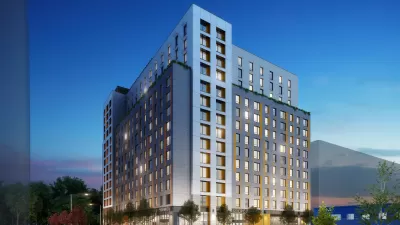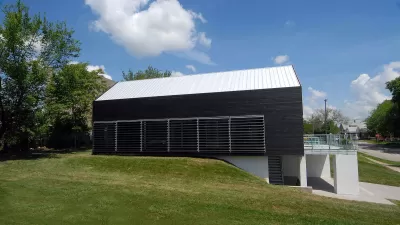From Passive House design to a broader range of amenities, affordable housing developers are finding new ways to make housing more efficient, comfortable, and flexible for residents.

In an article for Building Design & Construction, Quinn Purcell highlights the ten most relevant trends in affordable housing development. “Among affordable housing developers today, there’s one commonality tying projects together: uncertainty.”
Passive House design takes the top spot, signaling the growing importance of sustainability in building practices. “In today’s affordable housing landscape, request for proposals (RFPs) are identifying a desire for net zero operational, Passive House, and WELL building standards—more than just green design.”
Builders are also including more amenities that recognize the need for outdoor space and community areas. “Across the board, we’re seeing an increase in amenities that were once considered market-rate. Rooftop spaces, outdoor recreation, and courtyards are increasingly common (especially since the Coronavirus pandemic brought more people to the outdoors).”
Affordable housing is also a prime candidate for Trauma-Informed Design (TiD), an approach that uses thoughtful design to create an environment of safety and security. Similarly, developers are moving toward mixed-use projects, higher density, and heightened connectivity to the local community and transit hubs.
In addition to trends in architecture and design, the article also highlights regulatory challenges and trends such as lengthy project timelines and a growing interest in combining various local, state, and federal incentives and credits to make projects financially viable.
FULL STORY: Top 10 trends in affordable housing

Maui's Vacation Rental Debate Turns Ugly
Verbal attacks, misinformation campaigns and fistfights plague a high-stakes debate to convert thousands of vacation rentals into long-term housing.

Planetizen Federal Action Tracker
A weekly monitor of how Trump’s orders and actions are impacting planners and planning in America.

San Francisco Suspends Traffic Calming Amidst Record Deaths
Citing “a challenging fiscal landscape,” the city will cease the program on the heels of 42 traffic deaths, including 24 pedestrians.

Defunct Pittsburgh Power Plant to Become Residential Tower
A decommissioned steam heat plant will be redeveloped into almost 100 affordable housing units.

Trump Prompts Restructuring of Transportation Research Board in “Unprecedented Overreach”
The TRB has eliminated more than half of its committees including those focused on climate, equity, and cities.

Amtrak Rolls Out New Orleans to Alabama “Mardi Gras” Train
The new service will operate morning and evening departures between Mobile and New Orleans.
Urban Design for Planners 1: Software Tools
This six-course series explores essential urban design concepts using open source software and equips planners with the tools they need to participate fully in the urban design process.
Planning for Universal Design
Learn the tools for implementing Universal Design in planning regulations.
Heyer Gruel & Associates PA
JM Goldson LLC
Custer County Colorado
City of Camden Redevelopment Agency
City of Astoria
Transportation Research & Education Center (TREC) at Portland State University
Jefferson Parish Government
Camden Redevelopment Agency
City of Claremont





























